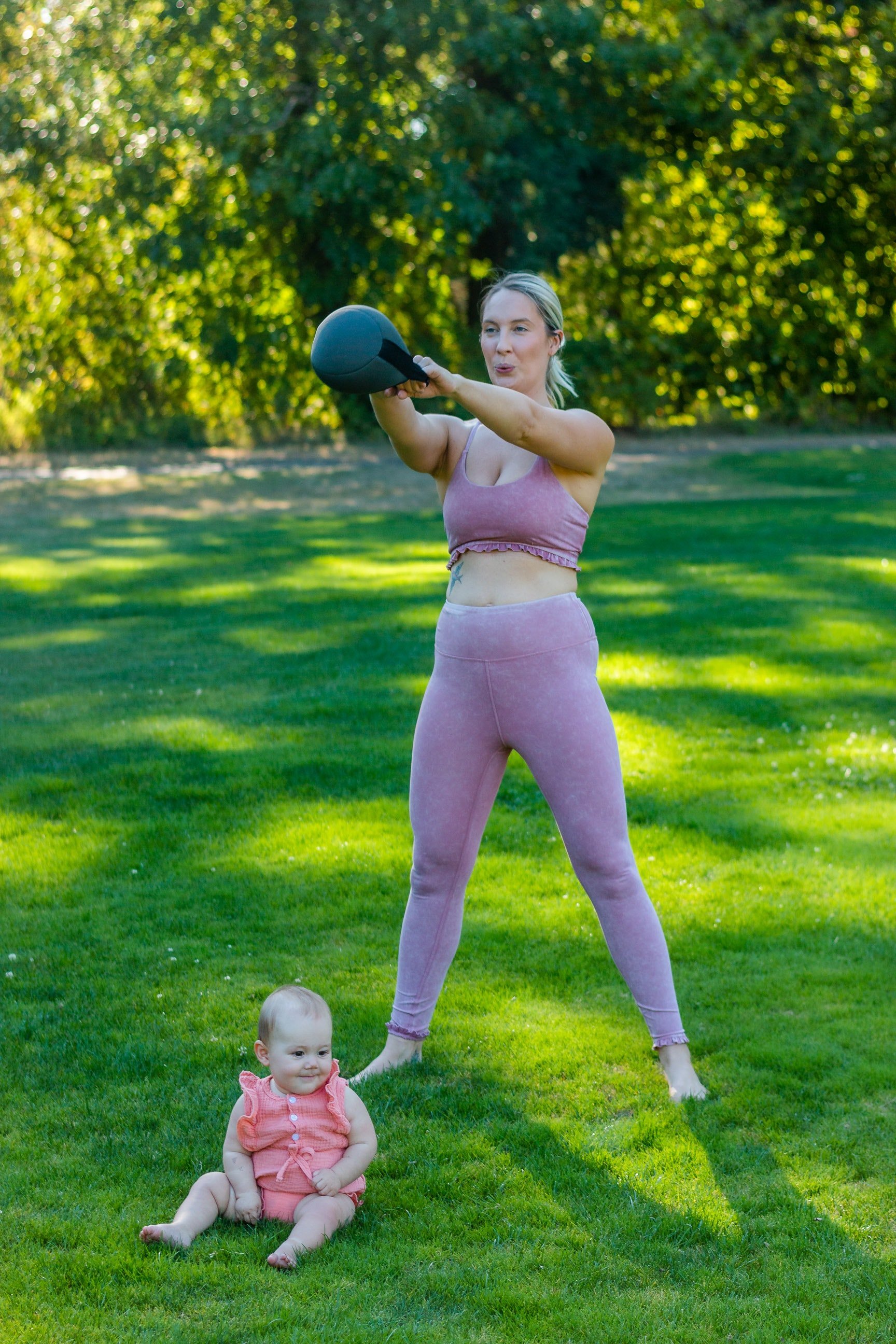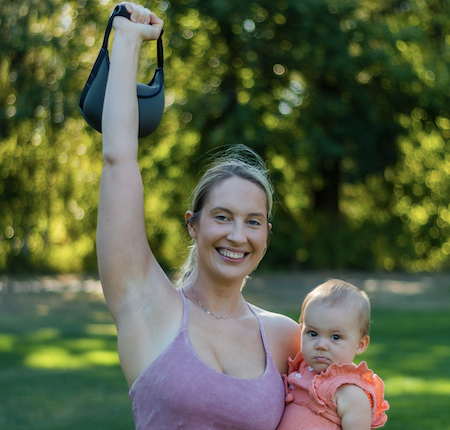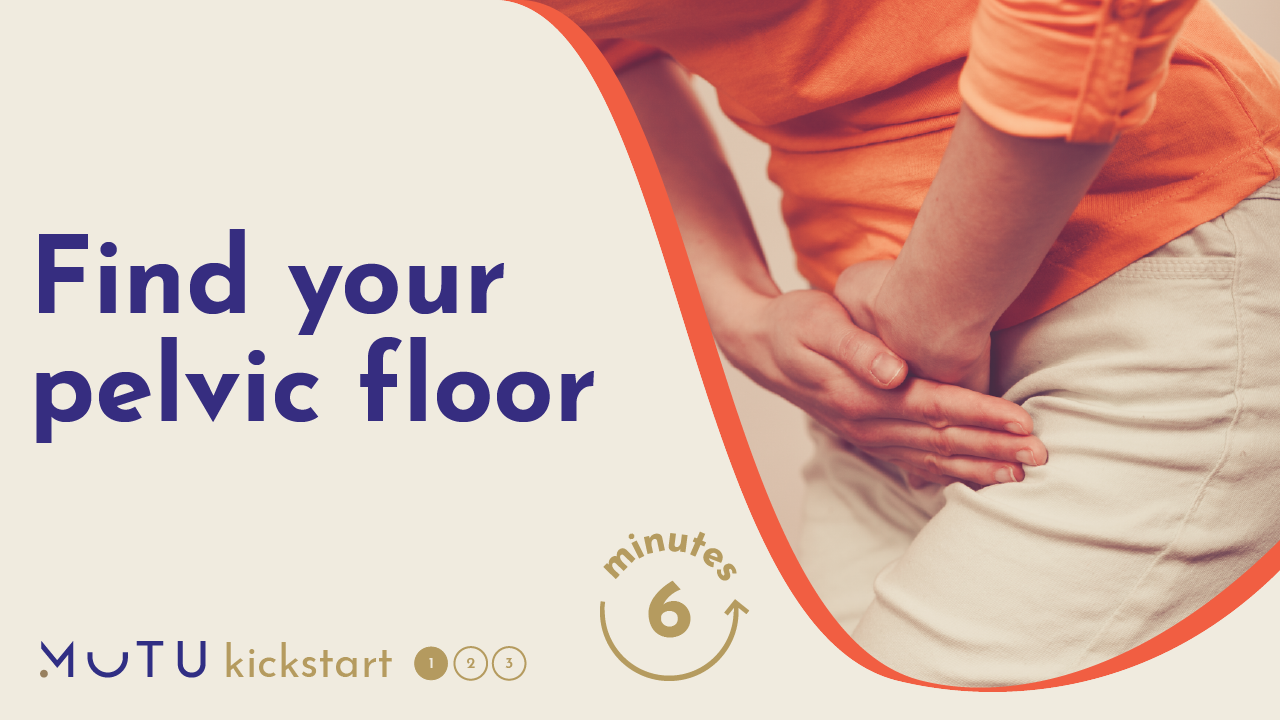Let’s take a look at the medical advice for when to return to a more intense workout routine postnatally.
It’s likely that you’ve heard to wait at least six weeks after having a baby to start working out again. That’s been the commonly shared advice for many years, and holds true for heavier postpartum workouts.
Let’s break down that advice a bit more clearly…
Postpartum exercise guidelines
The NHS provides a simple rundown of normal expectations and ways of managing the changes your body will go through in postpartum. It can be a good starting place for assessing where you are as you start to increase your postnatal workout intensity.
Additionally, we’ve already shared a breakdown of returning to working out after a baby, but here’s a quick refresher:
- You can return to light postpartum workouts as soon as you feel ready.
- This is true if you had a complicated birth, vaginal birth, cesarean birth, or uncomplicated birth.
- Having said that, when you feel ready might take longer if you had a less straightforward birth and it’s best to check in with your primary care provider about your healing process before you begin working out again.
Most medical recommendations are that all new parents should try and work in light exercise at least 20-30 minutes a day, five days a week. If that feels daunting, you can aim for just 10 minutes a day to start. You could also mix up some 10 minute days and some longer sessions other days. Do what feels best for you!
Building up to harder postnatal routines
As you go through your postpartum journey, you can start to build back up to longer and more intensive workouts at the pace that feels right for you and keeps you safe. You can move through stages of working out from light, to moderate, to vigorous intensity.
Some examples:
Light exercises
Walking, gentle stretches or easy yoga sessions, pelvic floor exercises, and tummy-focused workouts are considered light exercises you can do early in postpartum. Walking is the top recommended exercise in the early weeks following birth. It can be a wonderful boost for your brain and bod to take a stroll with baby.
Moderate exercises
Moderate level workouts will have you breathing heavily enough to maybe carry on a light conversation, but having your lungs and body work hard enough that you probably couldn’t belt out a show tune.
Biking on a flat surface, some tougher postpartum yoga routines, brisk walking, light weight lifting are examples of moderate exercises which are safe to do in postpartum. Be mindful of any tugging on stitches, hips feeling too loose, or heavy bleeding following these activities. If those occur, go back to light exercise and rest for a bit.
You can start gentle swimming and enjoying other easy water aerobics a week when you have stopped bleeding after birth. That’s typically around 6-7 weeks postpartum.
Vigorous exercises
ACOG describes vigorous exercises those which would make it hard to chat without having to take a pause. HIIT workouts, heavy lifting, running or jogging, intensive postpartum yoga routines, lap swimming are examples of vigorous postpartum exercises.
If you were doing more intense exercises before and/or during pregnancy, it may be possible to return to those workouts pretty soon after the baby is born. It’s best to check in with your GP, midwife, or OB before working out at this intensity again after birth.
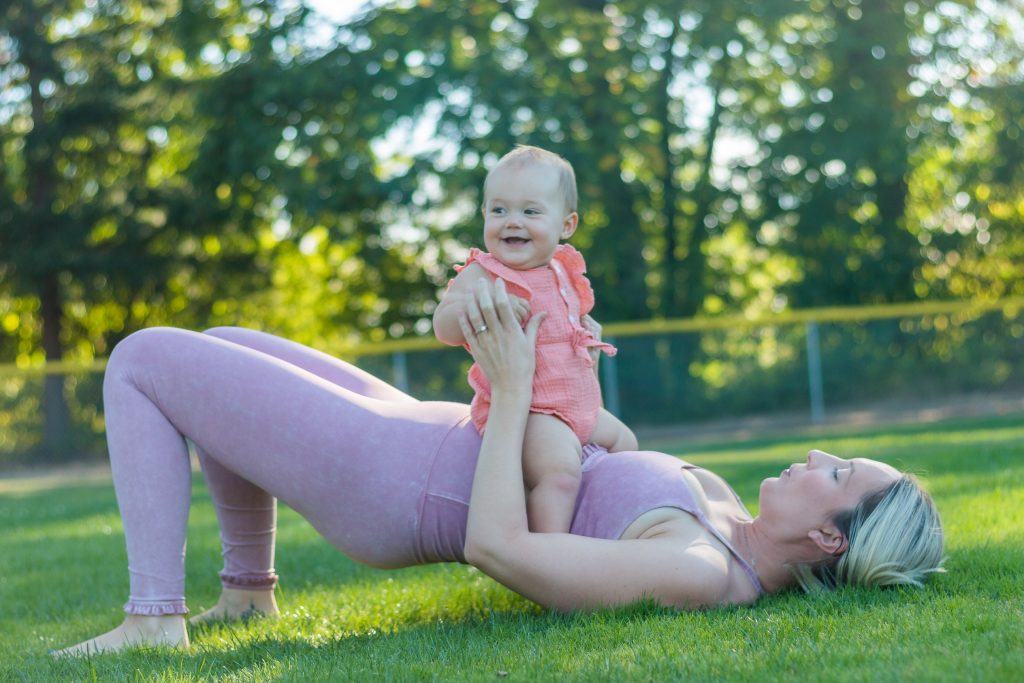
How will I know when I’m ready?
One clear guidepost for knowing when your body might be ready to increase workout intensity is that you can hold a pelvic floor contraction (or kegel) for 10 seconds. You’ll want to ensure that you have some pelvic stability before returning to moderate or heavy exercise. It may take several weeks or a few months to reach that point.
If you were already an athlete prior to giving birth and were able to maintain at least some fitness routine during pregnancy, you may find you can move through these stages somewhat quickly. If you are newer to moderate or vigorous exercise and just starting your workout process postnatally, it may take a few months to get into the swing of things. This is also true for anyone who experienced some pregnancy or birthing complications which require longer healing times.
If you are hoping to get into or back into high intensity postpartum exercises, including lifting, you’ll want to be building up to that level progressively. It is advisable to take on a slow and steady increase in exercise duration and intensity in this time.
This runs a bit contrary to the advice that everyone needs to wait to workout entirely till they reached six weeks postpartum. Medical advice now explains that most new mothers will benefit from having some postpartum exercise as soon as they can after birth.
Running and lifting after giving birth
The OBGYNs at UT Southwestern break down why it’s best to wait twelve weeks to start running again after birth. They offer this program for getting back into running in postpartum:
Start with no more than three 20 minute running sessions per week. These runs should be in intervals with 17 minutes of brisk walking and 3 minutes of running cumulatively. Each week, shift the time running by 10 seconds per interval. Within a few weeks, the balance of running to walking will shift into a full run.
The primary advice around lifting in postpartum is to wait at least six weeks for light weights (around the weight of your baby) and up to three months for anything heavier. It’s not wise to start heavy lifting without working up to that level of physical exertion and without getting a checkup to see how your body is recovering from birth. This is true even if you lifted before and through pregnancy.
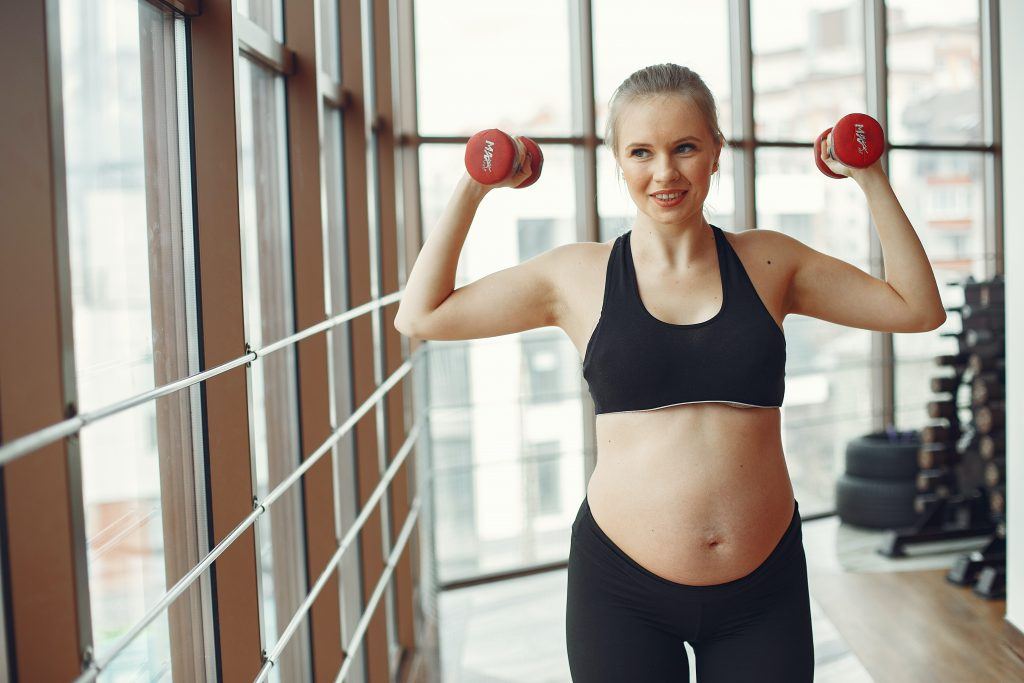
Diastasis recti and vigorous exercise
Many new mums are curious and concerned about working out safely with DR.
Diastasis recti occurs in about 50% of all pregnancies. It is a common occurrence and not itself an injury. By building back your core and pelvic floor strength through functional movement, you can return to harder fitness routines gradually, even with diastasis recti.
Importantly, if you notice any of these issues after working out, contact your primary care provider:
- Bladder or bowel problems (learn more here)
- Persistent pain in your back or tailbone (more on that here)
- A bulging or “soggy” feeling tummy after 6 weeks
- Persistently painful stitches
- Painful sex (read on here)
If you’re concerned about starting more intense postnatal exercise with Diastasis Recti, MUTU has some incredible resources on creating a safe and effective workout plan with DR.
Come workout with us!
The MUTU System is designed to help new moms reach their fitness goals from wherever they are starting their workout journey — in pregnancy, early postpartum, and beyond. You can learn more about how this revolutionary fitness app can guide you safely through increasing the intensity of your post birth workout routines. Click here to join the MUTU community and start getting back to feeling strong!

